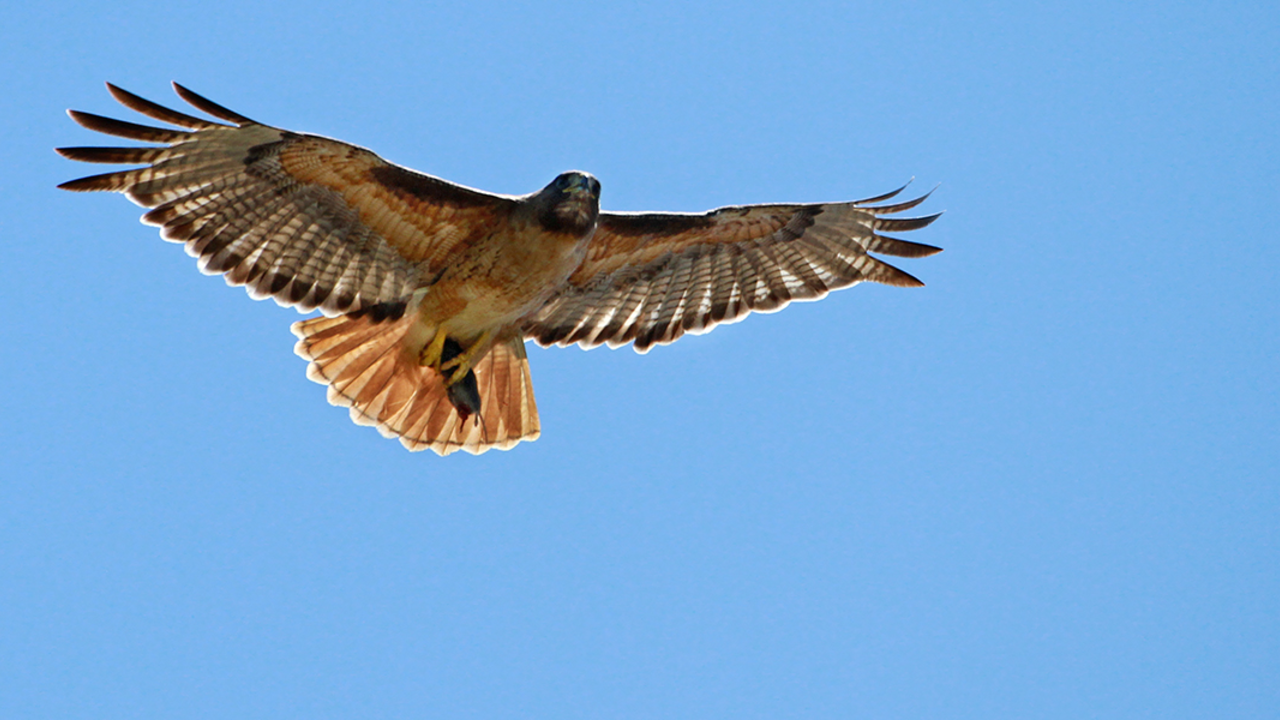Breezy Redtails and Their Feather Secrets

Will Elder/National Park Service
“Is that hawk on a leash?!” The absurdity of the question nearly stopped me in my tracks last fall. As an intern and new docent with the Golden Gate Raptor Observatory, I had heard many of the same questions over and over again. Where do the raptors come from? Where are they going? Why do they migrate? How far do they go? Rarely was I inclined to laugh out loud at a visitor’s queries.
The innocence and excitement of the young boy asking the question made me smile. I explained that the Red-tailed Hawk in question was not, in fact, tethered to the hill, but was practicing what is known as “stilling”. The group of students stared in wonder at the bird as I explained some of the basic biology of the raptors that migrate through the Headlands every year.
Stilling is a behavior most notably employed by Red-tailed Hawks. It is an energy-saving behavior that allows the bird to remain airborne with minimal flapping and only slight adjustments of the wings and tail. The hawk faces into the wind so that air moves from the front of the bird to the rear. The airfoil shape of the wing causes air to move faster over the top of the wing than below, resulting in an upward lift from the slower moving air beneath the wing.
It is during this stilling behavior that the alula, or “bastard wing” of the Red-tailed Hawk, comes in handy. The alula is a mobile digit on the anterior—or forward—portion of the wing with a few feathers attached directly to it. All birds have one on each wing, and they can be thought of as the bird’s thumbs, homologous to the thumb structures of humans.
During normal flight, the alula is hidden, pressed against the rest of the wing. However, while a bird is stilling or landing, the alula protrudes from the rest of the wing. This redirects airflow and adds a bit more surface area, contributing to increased lift and fine-tuned control, much like the flaps on an aircraft.
Raptors on migration need all of their energy-saving tricks. Although migration distances vary by species and even within species, migration is still a physically demanding process that these animals undertake each year.
Although much of the GGRO’s focus is on the hawks’ autumn migration, March and April are also great raptor migration months. For a great look at stilling Redtails, come visit the windier spots of the Golden Gate National Parks: the Marin Headlands, Lands End, and Mori Point. See if you can spot the alulas on a stilling Red-tailed Hawk. Maybe you can appreciate just a little more the wonderful adaptations of these amazing creatures.
By Megan Mayo, Golden Gate Raptor Observatory Intern